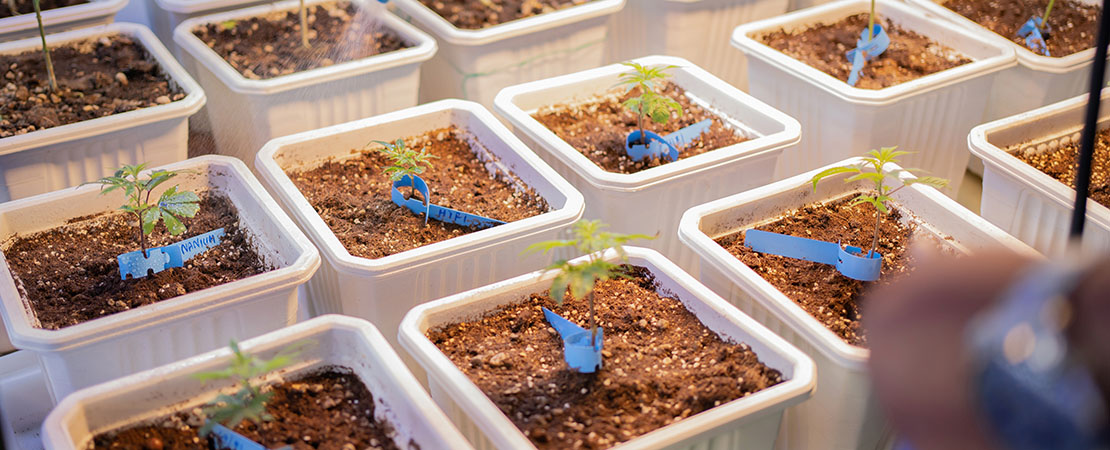4 Things To Know Before Converting To A Vertical Farming Facility
Here are some of the things to consider before setting up a vertical farming facility.
With the growing human population and demand for resources, the availability of arable land has dwindled.
Moreover, with the increased use of fertilizers, herbicides, pesticides, and shrinking water reserves, there has been a call for improving the agricultural sector.
These gaps have resulted in innovation and creativity, with experts devising alternative strategies to traditional farming, such as vertical farming. These innovations focus on utilizing less space, increasing yield per unit area, and lowering water usage.
In addition, the increased demand for healthier and more quality food free of agrichemicals has fueled the need for these critical innovations.
One popular advancement has been the creation of vertical farming facilities. These facilities are built on a concept known as vertical farming.
Vertical farming is an indoor cultivation method that aims to increase output vertically rather than horizontally. Vertical farming is a multilayer indoor growing system in which all growth factors such as humidity, light, temperature, water, and nutrients are controlled.
With this in mind, starting or converting an indoor grow space into a vertical farming facility is no easy task.
Considering some top vertical farming companies like Bowery farms, it’s a delicate process that demands high expertise and planning to ensure a successful operation.
What are the requirements for establishing and operating a successful cannabis vertical farming facility? Here are our top five recommendations.
4 Top Tips to Consider Before Converting to a Vertical Farming Facility
1. Get the Basics of How CEA Technology Works

Controlled environment agriculture (CEA) is growing crops under controlled environmental conditions to reduce pests and disease, increase efficiency and sustainability and lower the overall cost of production.
At the heart of CEA is automation to control the enclosed ecosystem better. Automation is employed to regulate the plants’ humidity, CO2 levels, temperature, light, and nutrition.
Automation helps you have an integrated climate control system that overall helps bring down your energy costs.
In the less ideal case, some growers may opt to have separate controls for their HVAC, CO2 burners, lighting, and irrigation which unfortunately aren’t” speaking to each other.” This scenario brings in a loss as you can have your CO2 burners on and the exhaust fan cooling your space simultaneously, which results in wasting the CO2 created.
The ideal scenario is to have your equipment staggered where they are turned on each at a time. This strategy can also help prevent energy spikes, increasing your utility costs.
For example, when lowering the temperature in your cannabis vertical farming facility, you can turn on the fans and exhaust system before turning on the power-intensive ACs to aim for the optimal growing temperature.
2. Select the Growing Media

Indoor gardening in a vertical farming facility can be done in various ways.
On the one hand, there’s hydroponics, a soilless cultivation method that leverages scheduled irrigation of nutrient-enriched water. It’s a common method in professional cannabis vertical farming operations.
The system works best with an automated irrigation system programmed to the plant’s needs and growth cycle. The grow medium used needs to allow for aeration as it impacts the water economy of the plant and its ability to utilize nutrients.
Another method is aquaponics. It’s a system where nutrients circulate from fish to plants and back. However, it’s not a popular method because it wastes water and increases the risk of plant root disease. Moreover, because the fish tanks may require regular and timely maintenance, it does not allow for year-round crop production.
Finally, there’s aquaponics, where roots are exposed and fed with nutrient-rich fog. This method relies heavily on automation and time-consuming technical problems may affect the plant’s nutrition, impacting their overall health and yield.
It’s important to note that in indoor vertical farming, the grow medium isn’t necessarily the source of nutrients for the plants.
Regardless of whether an organic grow medium such as soil, coconut husks, sphagnum moss, or peat is used, it is fertilizers that are used to provide nutrients to the cannabis plants.
The growing medium’s purpose is to host or support the roots and promote root aeration. All of these functions should be facilitated by the medium you choose for your cannabis vertical farming facility.
3. Plan Your Vertical Farming Facility

Whether you are just starting out or converting your horizontal operation to a vertical farming facility, planning your grow room is central to your success.
Vertical farming is considered a commercial venture, and with it comes a demand for an increased workforce, advanced climate control equipment, expertise, and workflow management.
Moreover, by utilizing the overhead space, you increase the capacity of your grow space, and the multiplied cannabis canopies will necessitate the refinement of your plant processing and harvesting technique.
Partnering with the right vertical systems installer entails having them design floor plans to maximize the use of your grow space. The planning helps ensure the vertical systems are customized to the dimensions of your grow space, allowing you to make the best use of your real estate while staying within municipal regulations.
In addition, they can help you do capacity evaluations which can help you refine your business plan projections.
By combining these factors, we can install efficient and long-lasting vertical grow systems for your vertical farming facility.
4. Capital Required for Converting Into a Vertical Farming Facility

Vertical farming is a capital-intensive business with high operation and equipment costs. The key to overcoming financial hurdles along the way is practicing a feasibility study to help clearly define your expectations.
According to various expert vertical farming companies, there are hidden costs that growers should recognize before converting to a vertical farming facility. They include:
- Permit acquisitions. These are elusive fees that can prove costly. However, with a credible vertical systems installer, it’s something you shouldn’t miss.
- Input costs like power and fertilizers.
- Wrong choice of seed strain to plant. When starting your vertical farm, there are different types of seed strains you can cultivate.
For example, as a startup vertical farming facility, auto-flowering cannabis varieties are preferable for their quick turnover and require low management skills. But as an expert grower, cannabis photoperiod feminized seeds are better as their growth cycle help save on energy costs.
- Equipment maintenance. Maintenance costs are a factor that needs constant monitoring.
- Hiring and maintaining experts in the management and operation of the vertical farming facility.
- Venturing into the wrong market. When choosing the best place for starting your vertical farm, look into markets that have legalized recreational and medicinal cannabis, such as Alaska, Arizona, California, Colorado, Washington D.C., Illinois, Maine, and Massachusetts.
Build a Profitable Cannabis Vertical Farming Facility
When ready to convert into a cannabis vertical farming facility, first arm yourself with some basic CEA technology knowledge. Then, have your grow room design and growing medium/cultivation method figured out.
Finally, find the best vertical farming systems installer for your grow facility. At MMI Agriculture, we specialize in vertical farming systems installation, offering premier products such as vertical grow racks and mobile carriages designed to help you get the most out of your grow space.
In addition to installation, we provide a 10-year warranty on equipment and labour to support your success in the vertical farming space. Contact us today for a quote.

